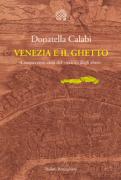Venezia e il ghetto

Five hundred years ago, March 29, 1516, the Senate of the Venetian Republic decided that the Jews of various city districts have to move "united" (ie all) in the court of houses of the Ghetto, at St. Jerome. Thus it was born the first "fence of the Jews." It was at the beginning the "Geto of copper", the place where were thrown ("gettati") the wastes of the foundry processing in the area. Over the centuries, and on all continents, this Venetian word would soon become synonymous with segregation. Born as a containment measure, the Ghetto soon became an effervescent and cosmopolitan place that welcomes Jews from the more different places, in addition to being one of the main trading centers of the Venetian Republic. The architecture of its houses, unusual for Venice - with its tenements strangely developed in height to make room for the growing number of people confined there -, is interwoven with the historical events of the place, very central for Italy and Europe. Here stand the pawn shops through which passes a lot of the lending power of the Lagoon, but in the Ghetto there are also liberal professions and culture, that make Venice one of the undisputed capital of the Jewish world and beyond.